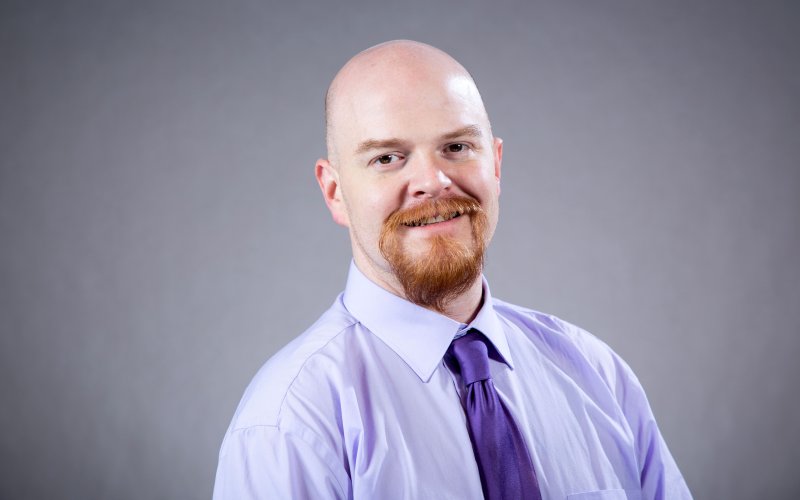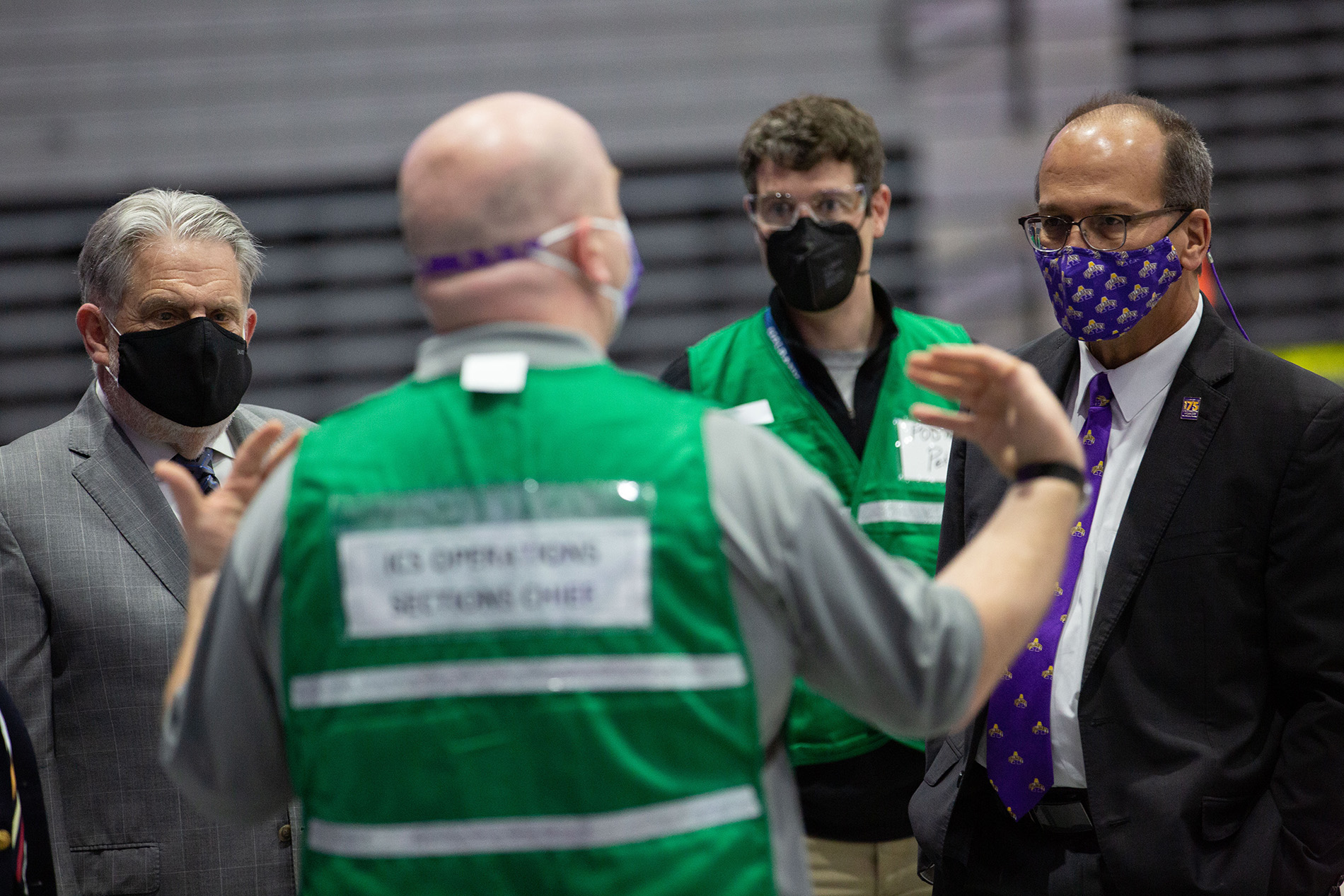5 Questions with Stephen Conard, Continuity & Emergency Manager

ALBANY, N.Y. (June 9, 2022) — When Stephen Conard joined the University as emergency management coordinator ahead of the fall semester in July 2019, he could have never envisioned how his role would transform in just a few short months.
Conard, who is now the continuity & emergency manager, has been on the front lines of UAlbany’s COVID-19 response since the start of the pandemic, working closely with University leadership and fostering collaboration amongst campus experts to ensure the health and safety of our community.
He shared an updated Emergency Management Plan (EMP) in April, which is now available on the Office of Emergency Management website. This plan is a living document to guide the institution’s response to all potential and probable emergencies and threats.
We caught up with him to learn more about the new EMP and how the pandemic has forever changed emergency management.
Why is the EMP important and what should we know about it?
The Emergency Management Plan is really the guide to how the University prepares for, responds to, recovers from and mitigates any hazard or crisis we might face. It is not meant to be a step-by-step plan. Instead, it provides our community with an opportunity to deepen its knowledge about the functionality of managing emergencies on our campus.
This is the first updated version since 2020. How does it look different?
The structure of the plan is starting to change to match our enhanced preparedness capabilities at the University, especially in key areas such as UAlbany’s response to snow, ice and other severe winter weather. This is a living document that will continue to update in future months and years. The latest version includes a new section on addressing infectious diseases, specifically COVID-19. We expect more updates to follow as emerging threats change and evolve.
How has the pandemic changed your role at UAlbany and emergency management as a whole?

Great question. I would say that the pandemic has shown that communities and organizations must come together to share their expertise and respond to crisis situations, holistically. Prior to the start of the COVID-19 outbreak, we held a series of tabletop exercises with various members of University leadership across the different departments on campus that simulated different types of crisis and hazard situations. If you ask anyone who was involved, I think they would tell you those exercises proved to be timely and helped the University better prepare for the pandemic.
Our field is still relatively new compared to other first responders such as firefighters or medical professionals, but I believe the last two years have highlighted its importance. The larger question to ask would be, “How long after the pandemic will amnesia occur again?"
What accomplishments are you most proud of since joining the University?
I mentioned our tabletop exercises already, but I’m also proud of what came of them to support the vision our office has for emergency management on campus. Another way this has been accomplished was through the creation of UAlbany’s first official Incident Management Team (IMT), which we launched in August 2019. The IMT essentially offers a megaphone for all the different offices, divisions and departments around campus, including the University Police, as well as academic experts, all of which play a vital role in crisis management and response. During COVID, our IMT met regularly through Microsoft Teams and Zoom, and continues to do so, discussing the latest COVID-19 updates and new health and safety regulations. These platforms were made available and tested by the IMT in the fall and winter of 2019, as part of exercises focusing on communications.
In general, raising campus awareness about the hazards and threats we may face is what I am most proud of. This includes students. I instruct as an adjunct professor in the College of Emergency Preparedness, Homeland Security and Cybersecurity, offering students real exposure to the crisis situations and interconnected complexities facing our community and beyond.
You often say that preparedness is everyone’s job. What advice do you have for the campus community to do their part?
Stop and think. Whatever it is, whether an emergency, crisis or just a hard decision you must make. Stop, think and take a breath. That breath will allow you to remove the pressures of immediate chaos, analyze the situation and make the best decision possible. Also, make sure you participate. You are part of a larger campus community, both here and abroad. Your input matters and helps us make the best collective decision for a resilient University.




